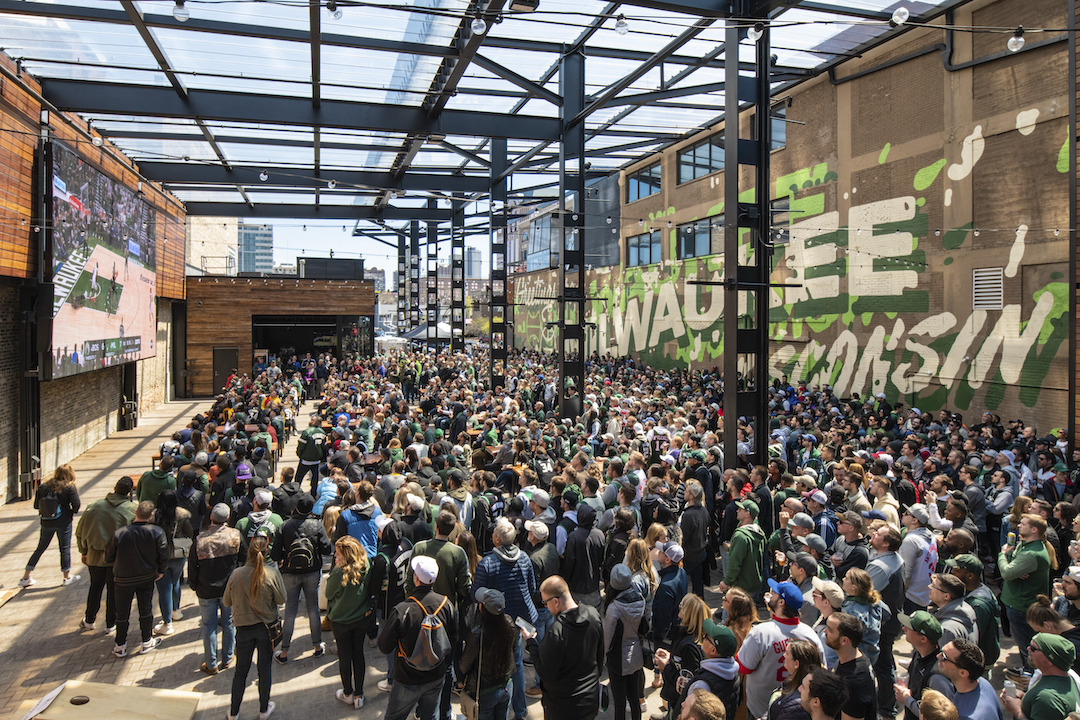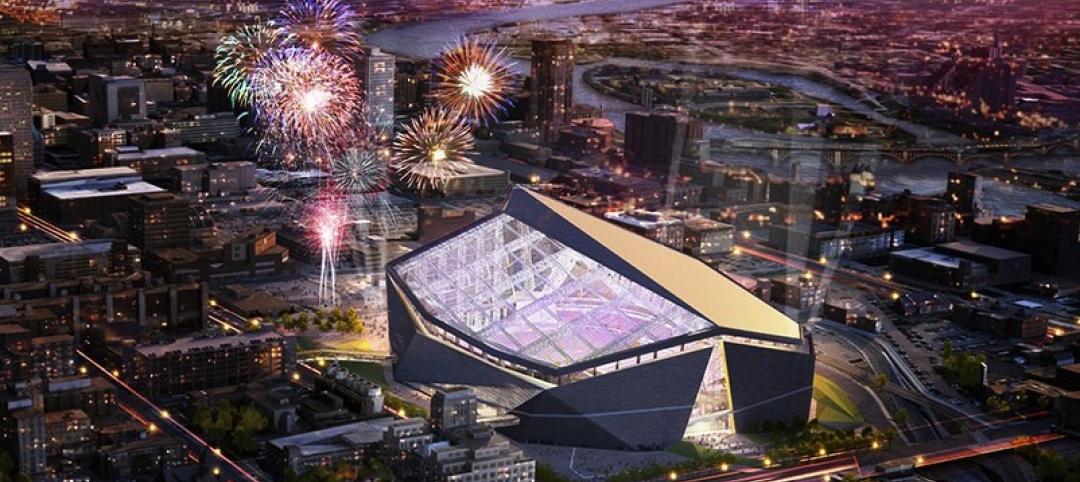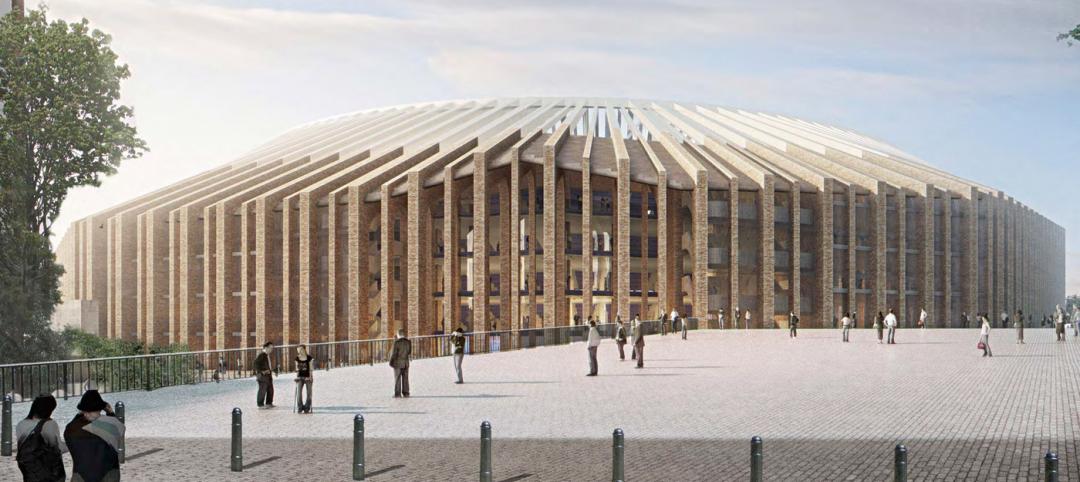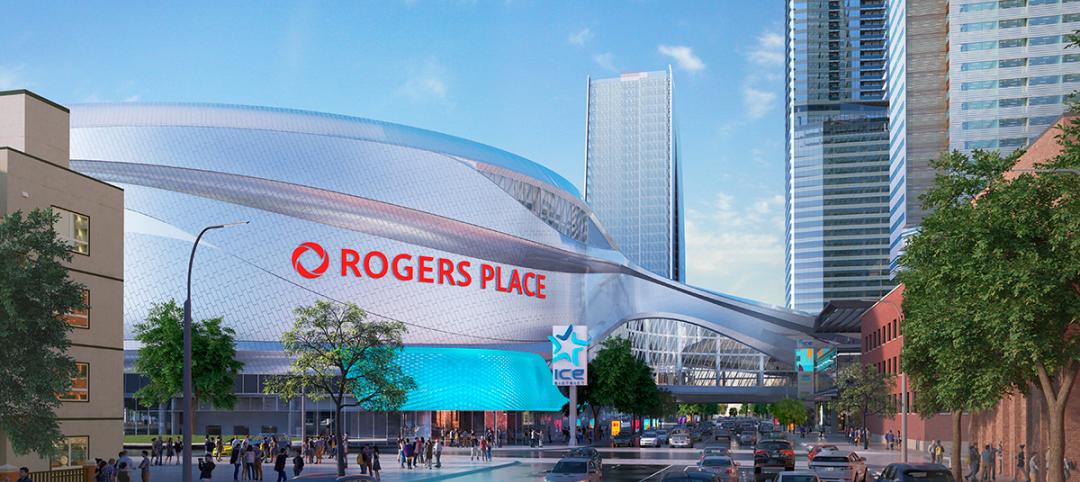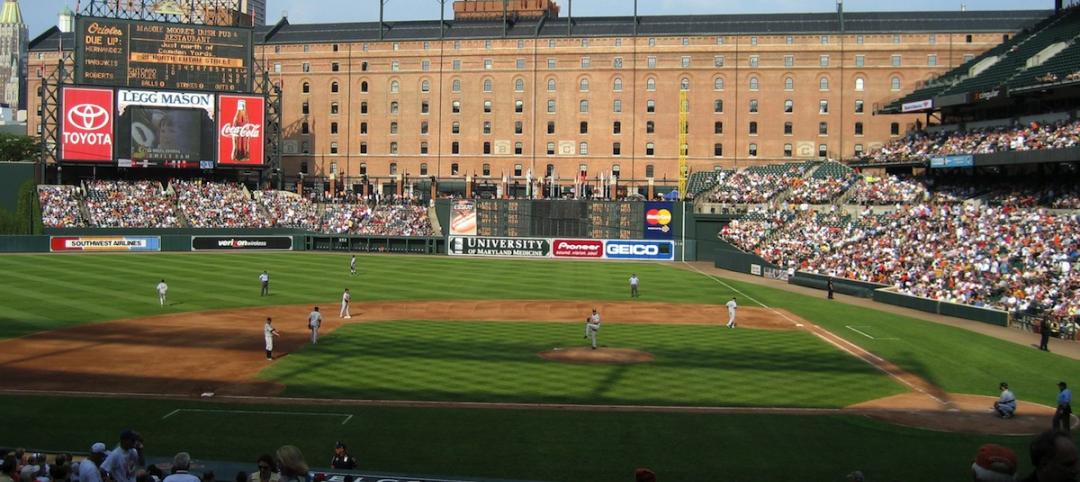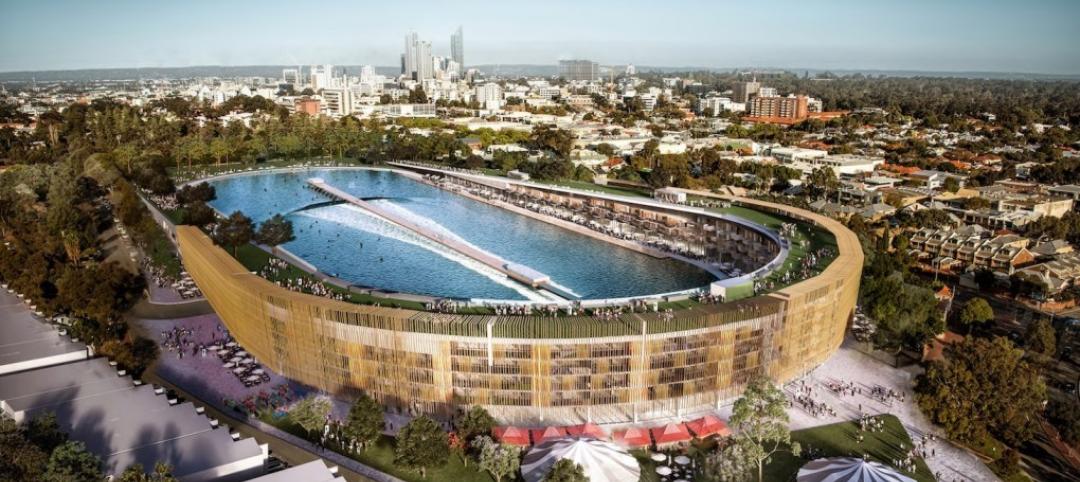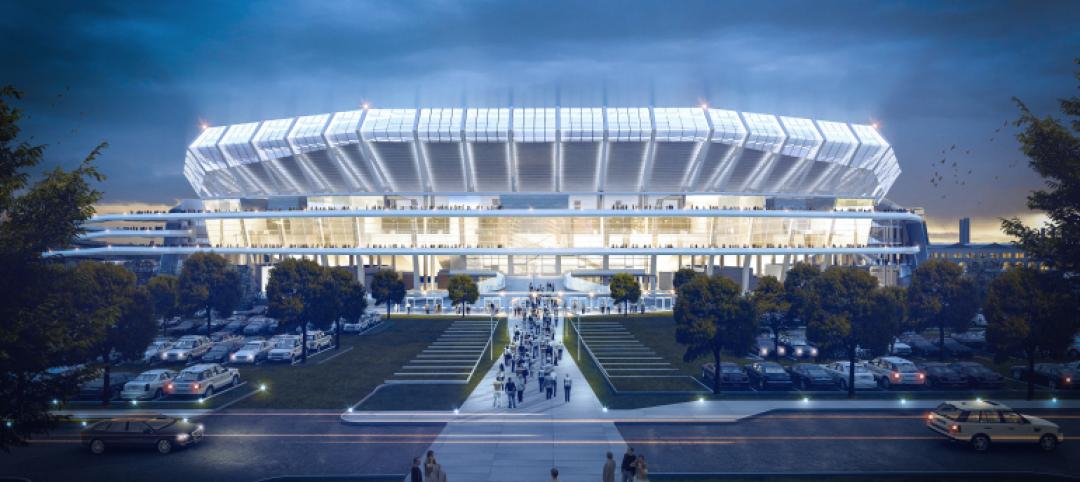Giannis Antetokounmpo has been the talk of the basketball world after leading the Milwaukee Bucks to their first NBA Championship in 50 years. After dropping 50 points in the clinching game six and winning Finals MVP, it’s been well deserved.
But hot on his heels for Finals MVP, and perhaps MVP of the entire playoffs was the Milwaukee Bucks Deer District, the sobriquet of the entertainment district built on the 30 acres that surrounds the Fiserv Forum. Tens of thousands of Bucks fans flocked to the Deer District for every home game during the team’s 2021 playoff run. This culminated with an estimated 65,000 fans who packed the area outside of the arena for the Game 6 victory, dwarfing the capacity crowd of just over 17,000 inside.
Designed by Gensler, the Deer District helped provide what was arguably the best home court advantage for any team throughout the playoffs. “I think seeing the crowds at the Deer District exceeded all our expectations,” said Aleksandar Sasha Zeljic, AIA, NCARB, LEED AP, Principal and Project Lead, Gensler. “We were thrilled to see the District in action and serving the purpose it was designed for, which is to bring fans together.”

© Richard Ebbers, Design by Gensler in partnership with RINKA
The architecture of the district is meant to be a modern interpretation of the industrial heritage of the city. Exposed steel and aluminum framing, glass, wood, and masonry materials are all incorporated into the space.
The district opened in tandem with Fiserv Forum in 2019 and acts as a catalyst for the development and an evolution for both itself and downtown Milwaukee, creating a year-round urban destination in the heart of the city.
Tech, tech, and more tech: Bringing fans together, inside and out
A main goal of the Deer District’s design was to elevate fans’ game day experiences, which it did for tens of thousands of fans who were unable to get tickets to games throughout the playoffs. The arena and the surrounding entertainment district creates a cohesive game day experience for all fans, whether inside the arena itself or outside in the Deer District. “Fiserv Forum, the plaza, and the larger entertainment district were fundamentally designed to support each other,” Zeljic said.
The design for the entertainment district and plaza where not even started until the design for the arena was almost completed. This allowed the designers to focus on ensuring these spaces felt connected despite being very different in terms of overall complexity.
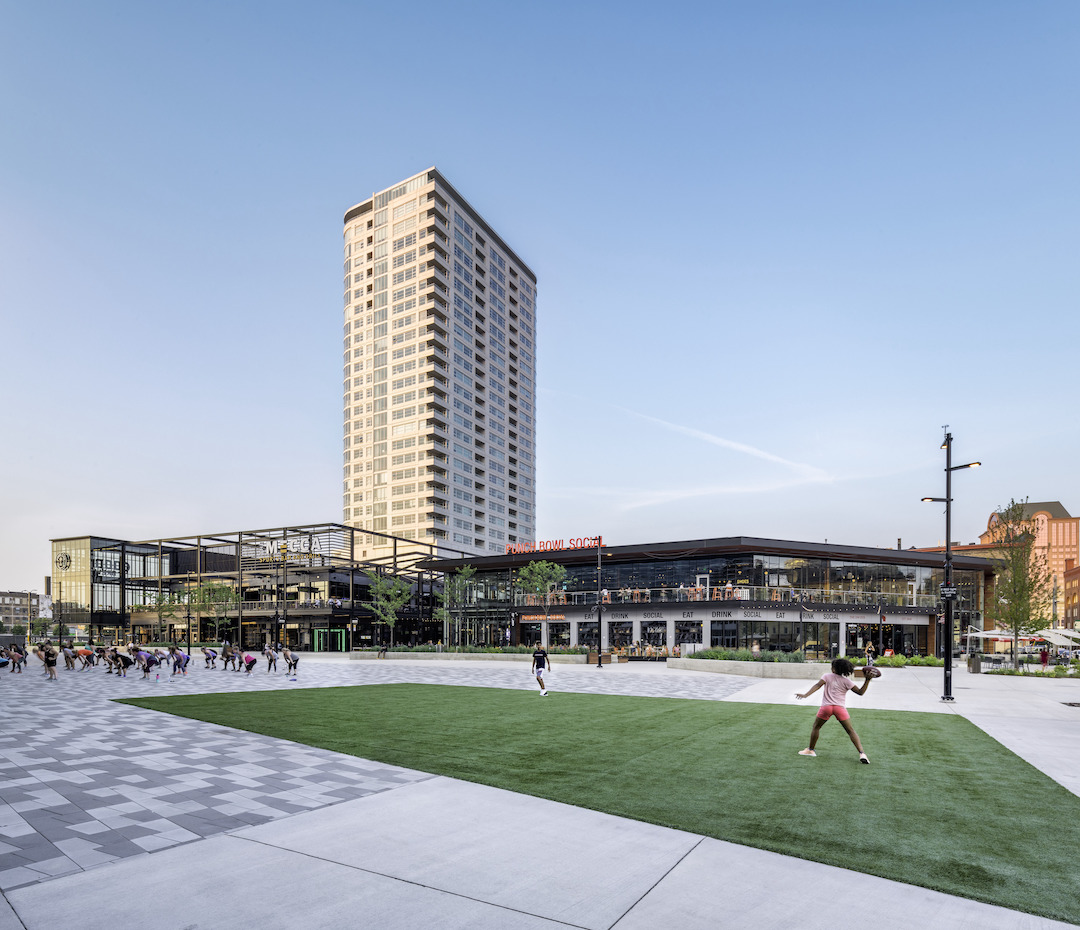
© Richard Ebbers, Design by Gensler in partnership with RINKA
A strategy that helped create a seamless connection between inside the Forum and outside in the District was the intentional use of technology. Or, as Ryan Sickman, Principal and Global Leader of Gensler’s Sports Practice, put it, it was all about “tech, tech, and more tech.” Broadcasting screens and other forms of real-time entertainment help to bring the experience and energy from inside the arena to the surrounding entertainment district.
“Even though we are an increasingly mobile-dependent society, we still like watching events together as a group,” Sickman said. “Watching a feed on your personal device that may be a second or two off from the mass group is generally not much fun, so providing a large enough display or a sufficient number of displays that will allow everyone to watch together in real time contributes to the togetherness and heightens the overall fan experience.”
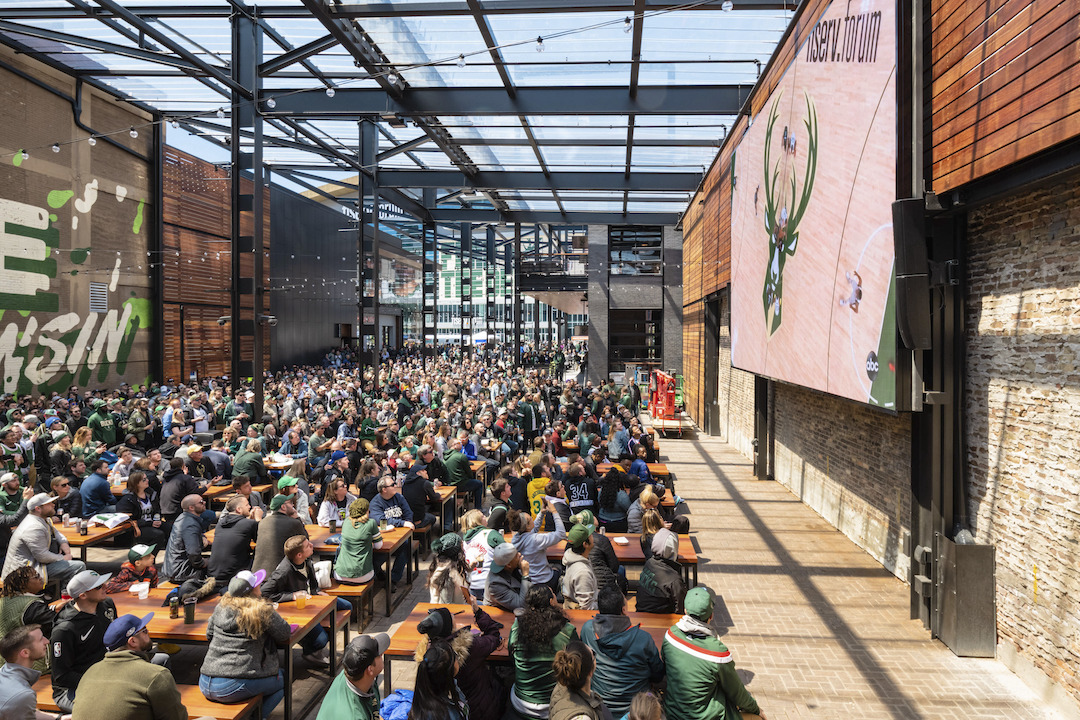
© Richard Ebbers, Design by Gensler in partnership with RINKA
Indoor-outdoor dining areas adjacent to the plaza and various levels of balconies promote activity both at ground level and above. The balconies work to turn the building into a public arena that frames the plaza with tiered views of the center of activity, which mimics the action inside Fiserv Forum and provides a similar arena experience.
“As we look to the future, simultaneously and ceremoniously connecting the design of the venues with their surrounding districts will be vital to creating connections between the inside and the outside of venues in a way that feels organic and intentional,” said Zeljic.
Numbers vs Human Experiences
Big crowds can be exciting and newsworthy, but a successful entertainment district isn’t all just a numbers game. Human experiences need to be at the forefront of the design. After all, only a few teams a year make a deep playoff run that brings extra amped up fans on game days.
Successful entertainment districts need to be able to survive and remain active when a team is winning, but also when a team is losing. Non-playoff bound teams in the NBA play 41 home games a season. NFL teams are only guaranteed eight home games a season. For the rest of the year, a stadium’s entertainment district needs to be specially catered to its environment so it can function efficiently on a day-to-day basis.
“Every sport and its fandom has its own idiosyncrasies, so flexibility is key for that reason,” Sickman said. “The Deer District, for example, was most recently used as a backdrop for the Bucks’ championship, but will most certainly be a place next year for soccer fans to congregate and support their teams during World Cup watch parties.”
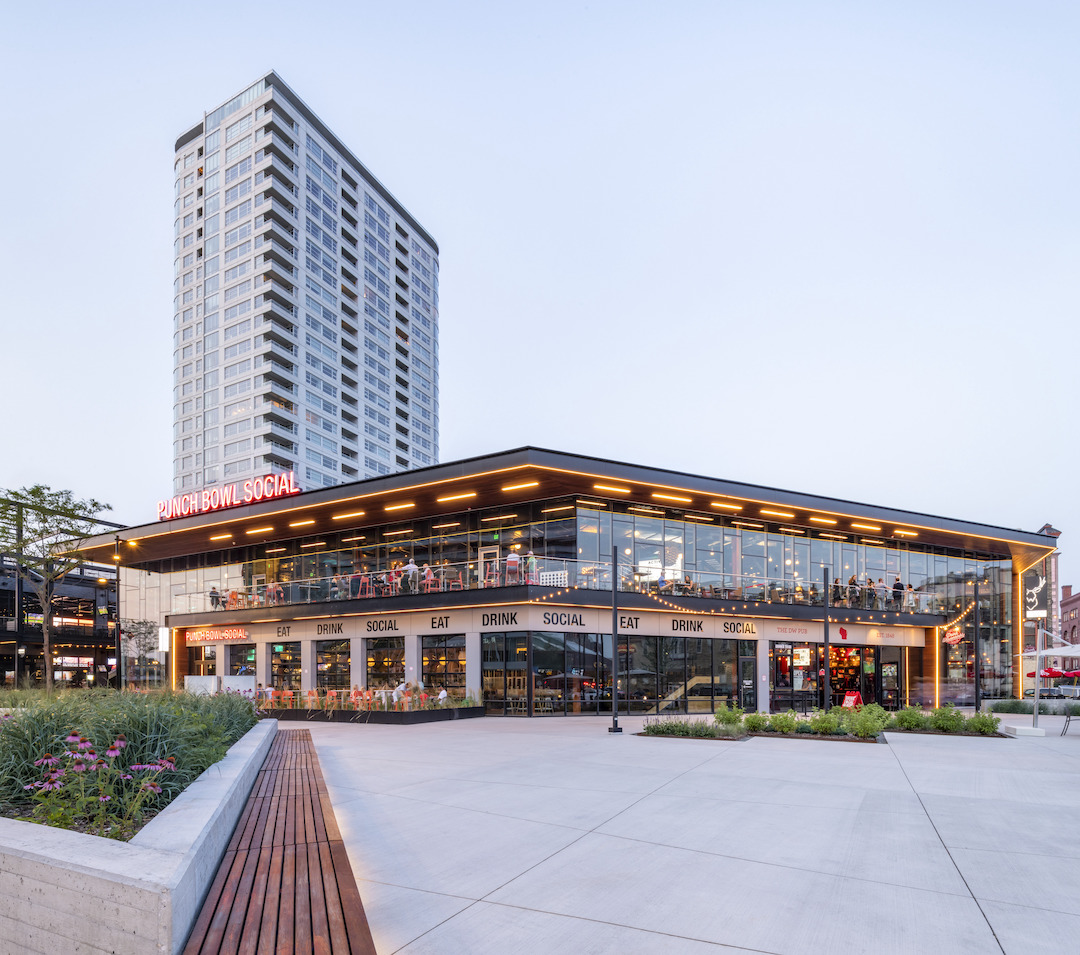
© Richard Ebbers, Design by Gensler in partnership with RINKA
Additionally, what may work in Milwaukee won’t necessarily work in Los Angeles, Chicago, Miami, or Dallas. In the same way the architecture of the Fiserv Forum’s entertainment district is meant as an homage to the city’s industrial heritage, entertainment districts that surround other stadiums in other parts of the country need to do the same to embed themselves within the local culture and demographics.
Many of the people who will go to gather outside of the stadium may not follow the sport on a game by game basis. They simply want to be a part of an exciting moment sweeping through a given city, such as the case with Milwaukee’s championship run. This means the districts need to include elements that can help people socialize and be entertained in different ways. Access to restrooms and food/beverage offerings as well as a variety of seating and standing room areas are a critical factor for a successful entertainment district.
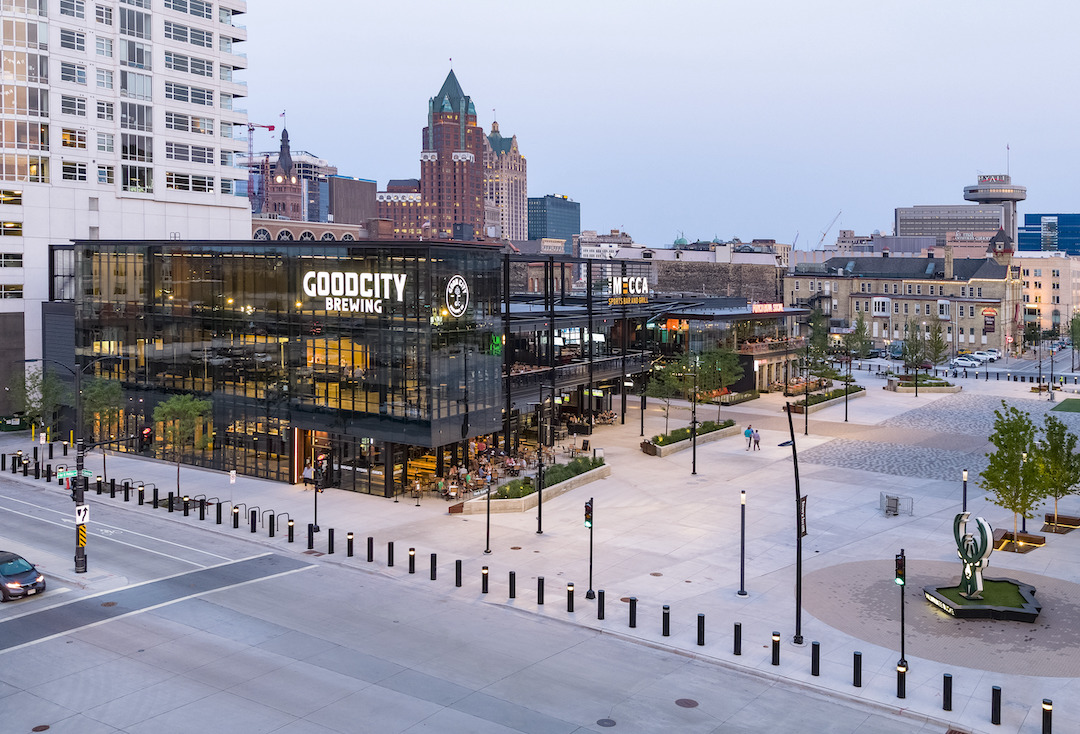
© Richard Ebbers, Design by Gensler in partnership with RINKA
Therein lies the key; a successful entertainment district needs to be a place people want to go to spend an afternoon or night when a team is good, bad, or playing elsewhere. Whether it is large crowds or small groups, people and the experiences they desire must come first.
“As humans, we crave being together,” said Sickman. “We want experiences where we can be with other people, where we can celebrate together, where we can sing, chant, drink, dance together. That’s the whole point of these districts, to bring people together.”
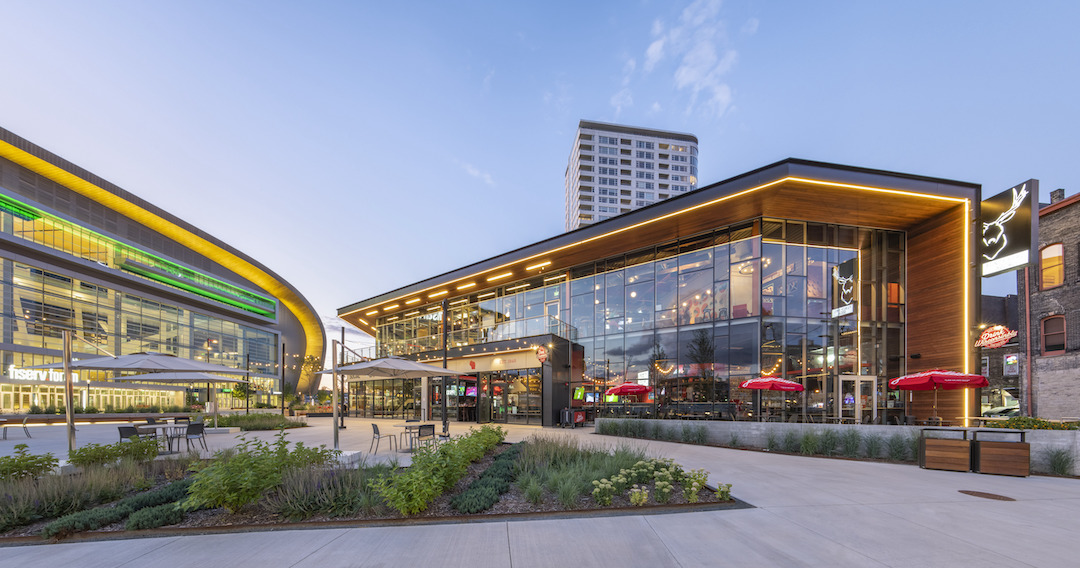
© Richard Ebbers, Design by Gensler in partnership with RINKA
Related Stories
Sports and Recreational Facilities | Dec 7, 2015
High tech material makes Minnesota Vikings' new stadium's roof light and strong
U.S. Bank Stadium will have an ETFE (ethylene tetrafluoroethylene) pneumatic roof, a durable, flexible material made of a polymer similar to Teflon.
Sports and Recreational Facilities | Dec 3, 2015
Herzog & de Meuron unveils renderings of redeveloped stadium for Chelsea FC
As many as 264 brick piers will line the perimeter of the stadium and extend to a steel ring perched above the field.
Sports and Recreational Facilities | Nov 16, 2015
Edmonton's Rogers Place among North America's 'next-gen' stadiums
The home of the NHL’s Edmonton Oilers made Curbed’s list of 11 next-generation stadiums in North America. Also on the list are new venues for the NFL’s Atlanta Falcons and the NBA’s Milwaukee Bucks.
Sports and Recreational Facilities | Nov 13, 2015
It’s time to make MLB stadiums safer
Major League Baseball doesn't have official stadium design guidelines. Skanska's Tom Tingle has three ways the league can make the game safer for fans while still preserving its integrity.
Office Buildings | Nov 6, 2015
Real Madrid to get new headquarters designed by Rafael de La-Hoz
The design of the building is made of a set of two parallelepiped-shaped volumes.
Sports and Recreational Facilities | Nov 2, 2015
MJA Studio proposes converting Australian stadium into giant surf pool
The Subiaco Oval, which was built in 1908, could become the Subi Surf Park, a complex with apartments, stores, and a 300-meter-long wave pool.
Sports and Recreational Facilities | Sep 25, 2015
Italian soccer stadium designed to look like translucent waves
Architect Massimo Guidotti created a sinuous design for the stadium, which can support up to 16,000 seats.
Sports and Recreational Facilities | Sep 21, 2015
Tokyo Olympic Stadium saga ends for Zaha Hadid
After resubmitting a bid, the firm will not design the main venue for the 2020 Olympics after all.
Sports and Recreational Facilities | Sep 2, 2015
Proposed stadium for NFL's St. Louis Rams offers more than just football
The stadium's newest features have been unveiled by HOK, which could give the Rams one of the most inventive homes in the league—if it gets built.
Sports and Recreational Facilities | Aug 24, 2015
Green Bay Packers to start construction on a business district near Lambeau Field this fall
Flush with cash, the NFL team is kicking in about half of the $130 million for the 20-acre project’s first phase.


